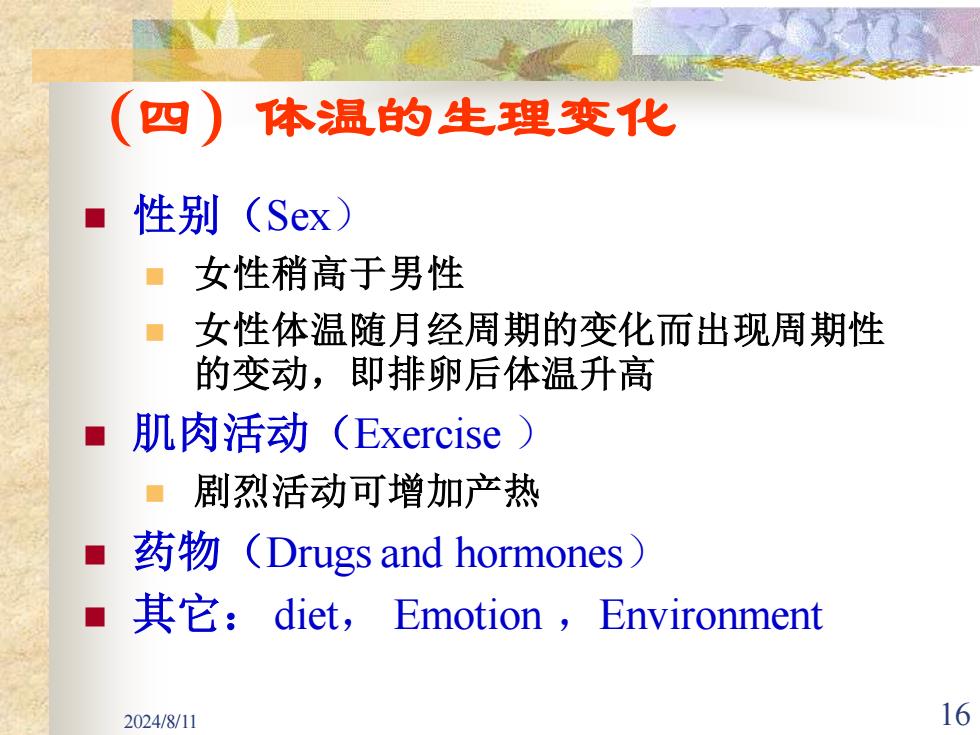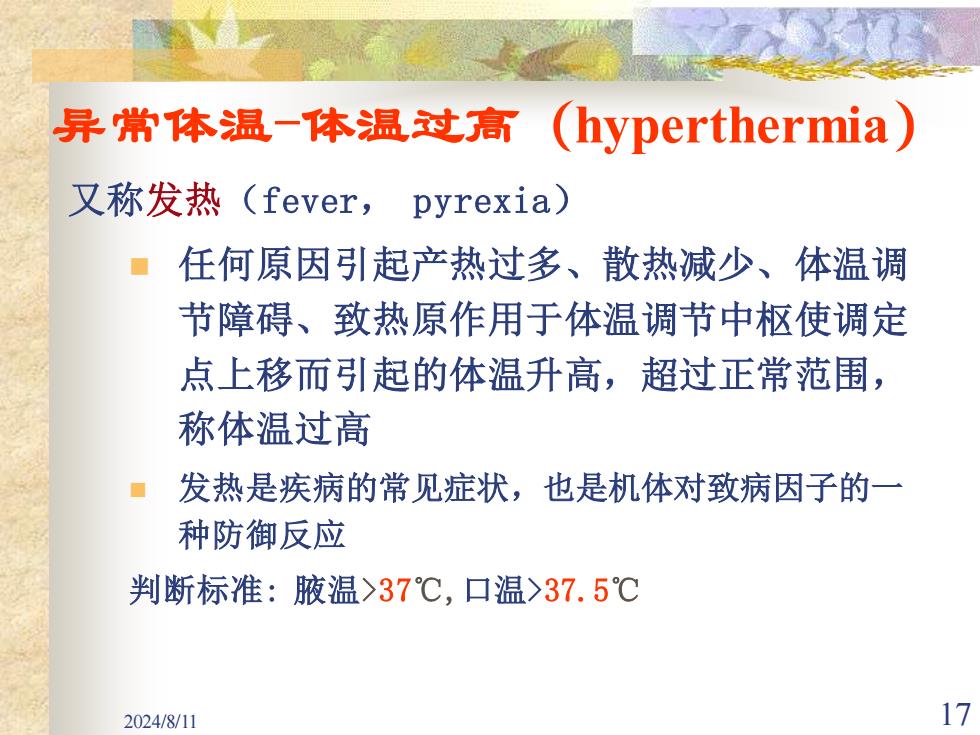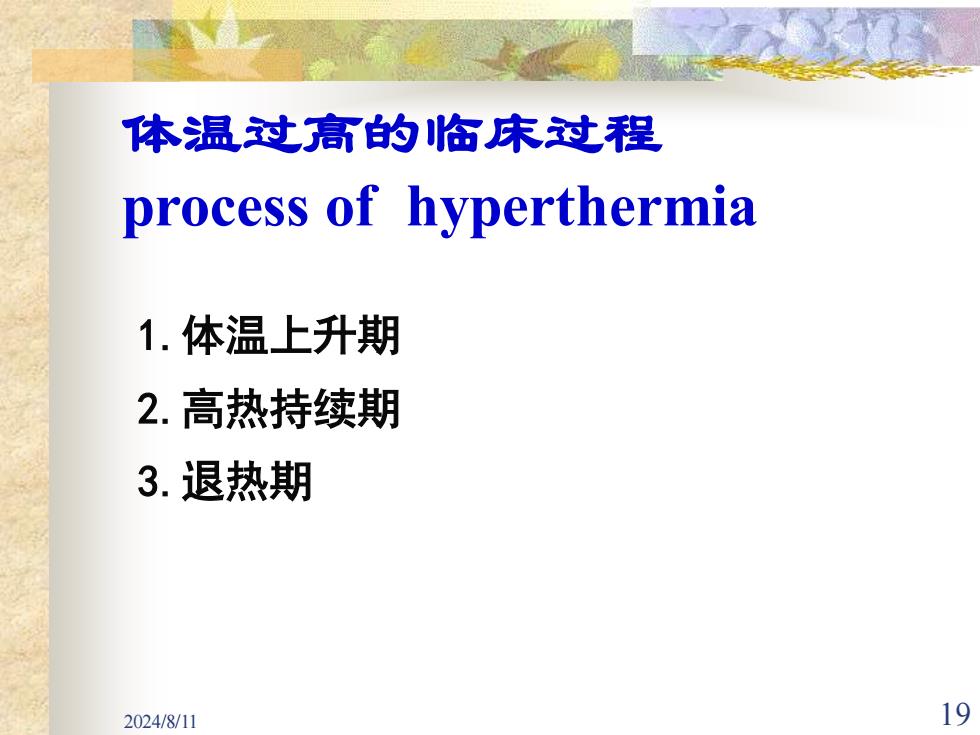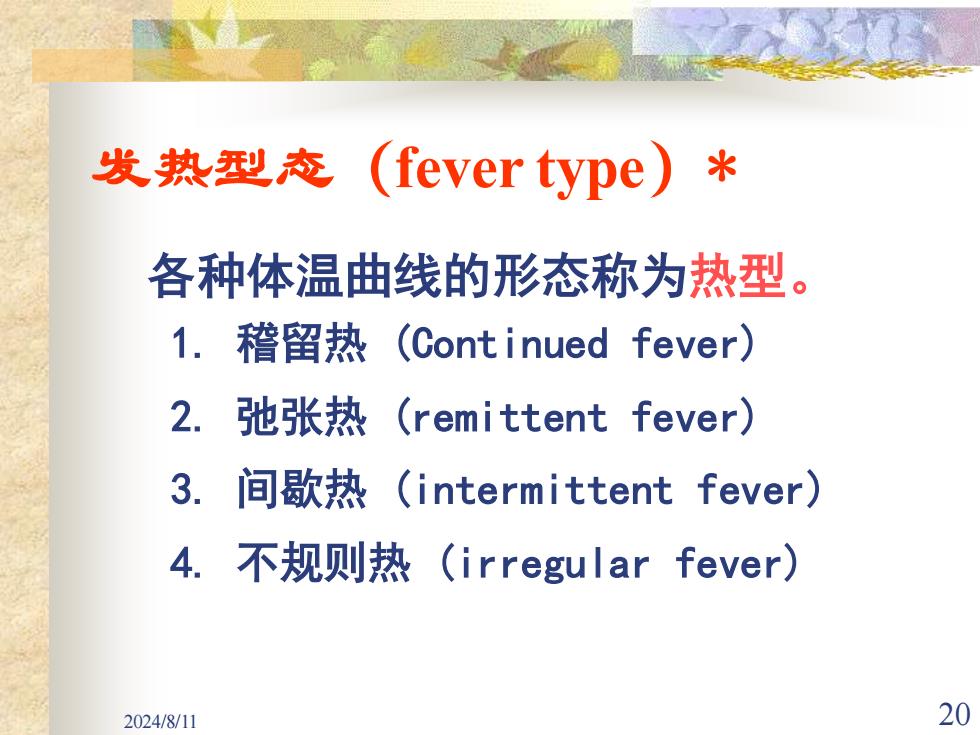
四 体温的生理变化 ■ 性别(Sex) ■女性稍高于男性 ■女性体温随月经周期的变化而出现周期性 的变动,即排卵后体温升高 肌肉活动(Exercise) ■剧烈活动可增加产热 药物(Drugs and hormones) ■ 其它:diet,Emotion,Environment 2024/8/11 16
2024/8/11 16 (四)体温的生理变化 ◼ 性别(Sex) ◼ 女性稍高于男性 ◼ 女性体温随月经周期的变化而出现周期性 的变动,即排卵后体温升高 ◼ 肌肉活动(Exercise ) ◼ 剧烈活动可增加产热 ◼ 药物(Drugs and hormones) ◼ 其它: diet, Emotion ,Environment

异常体温一体温过高 (hyperthermia 又称发热(fever, pyrexia) ■任何原因引起产热过多、散热减少、体温调 节障碍、致热原作用于体温调节中枢使调定 点上移而引起的体温升高,超过正常范围, 称体温过高 发热是疾病的常见症状,也是机体对致病因子的一 种防御反应 判断标准:腋温>37℃,口温>37.5℃ 2024/8/11 17
2024/8/11 17 异常体温-体温过高(hyperthermia) 又称发热(fever, pyrexia) ◼ 任何原因引起产热过多、散热减少、体温调 节障碍、致热原作用于体温调节中枢使调定 点上移而引起的体温升高,超过正常范围, 称体温过高 ◼ 发热是疾病的常见症状,也是机体对致病因子的一 种防御反应 判断标准: 腋温>37℃,口温>37.5℃

体温过高的临床分度米 Classification of hyperthermia 分度 温度范围 低热 37.537.9℃ 中等热 38.0≈38.9℃ 高热 39.0≈40.9℃ 超高热 41℃以上 2024/8/11 18
2024/8/11 18 体温过高的临床分度* Classification of hyperthermia 分度 温度范围 低热 37.5~37.9℃ 中等热 38.0~38.9℃ 高热 39.0~40.9℃ 超高热 41℃ 以上

体温过高的临床过程 process of hyperthermia 1.体温上升期 2.高热持续期 3.退热期 2024/8/11 19
2024/8/11 19 体温过高的临床过程 process of hyperthermia 1.体温上升期 2.高热持续期 3.退热期

发热型态 (fever type)* 各种体温曲线的形态称为热型。 1.稽留热(Continued fever). 2.弛张热(remittent fever) 3.间歇热(intermittent fever) 4.不规则热(irregular fever) 2024/8/11 20
2024/8/11 20 发热型态(fever type)* 各种体温曲线的形态称为热型。 1. 稽留热 (Continued fever) 2. 弛张热 (remittent fever) 3. 间歇热 (intermittent fever) 4. 不规则热 (irregular fever)